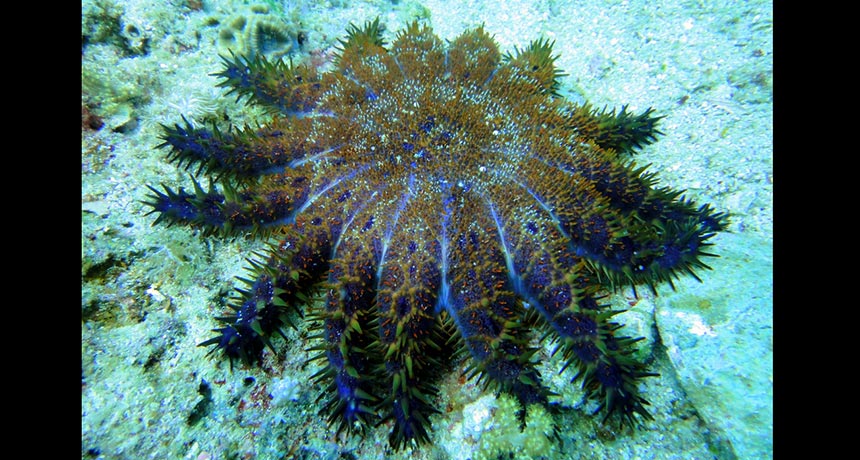Coral competitor becomes ally in fight against starfish

An outbreak of crown-of-thorns starfish (one shown) can devastate a reef. But algae, a coral competitor, may protect coral from the predatory starfish, a new study finds.
mattk1979/Flickr (CC-BY-SA 2.0)





